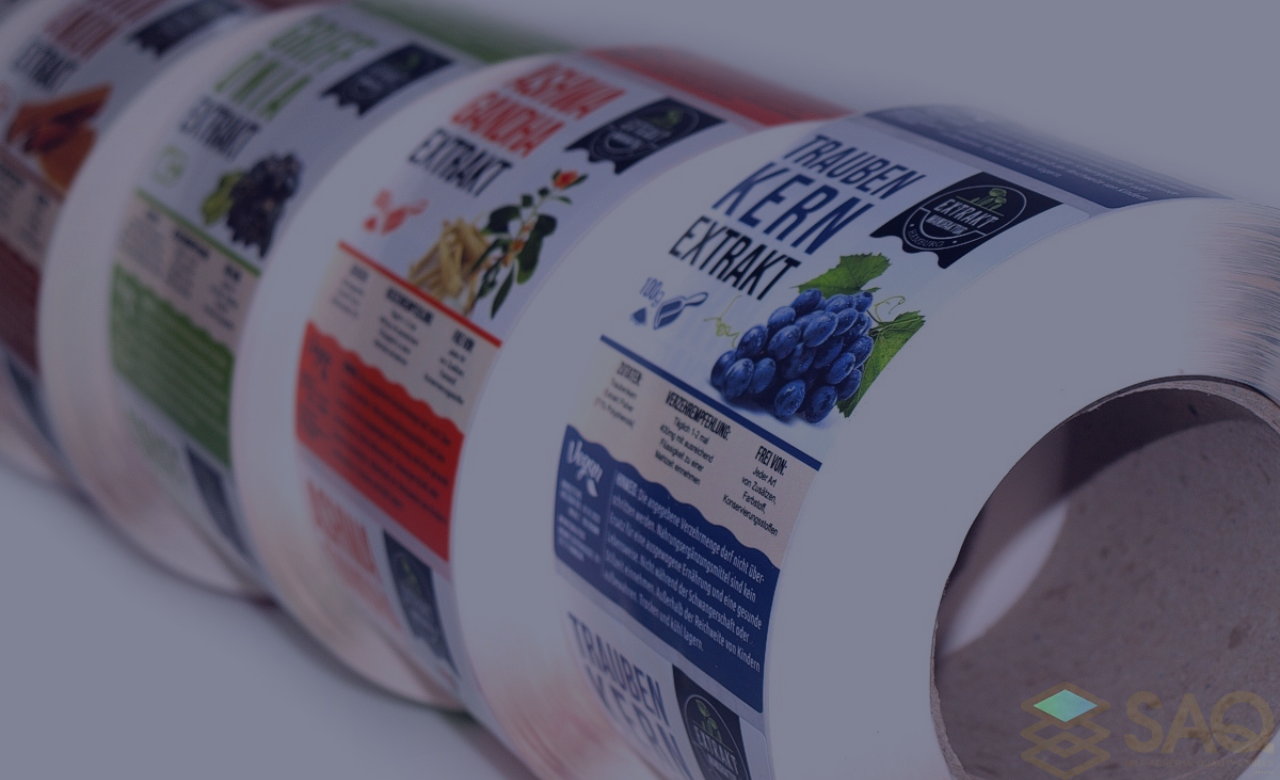Selecting the right label type is important for business owners, manufacturers, and label industry professionals, as labels can affect visual presentation of your product, durability, and overall brand perception.
Among the many options, two popular types are pressure-sensitive labels, and self-adhesive labels. Both share similarities but have distinct features that make them suitable for different applications.
This blog covers everything you need to know about pressure-sensitive labels vs self-adhesive labels to help you choose the ideal option for your products.
What are Pressure-Sensitive Labels?
Pressure-sensitive labels are pre-coated with adhesive, activated by applying pressure. Unlike heat-sensitive or water-activated labels, PSLs don’t need solvents, making them a preferred choice in the packaging industry.

Key Components of Pressure-Sensitive Labels:
- Face Stock: The top layer that showcases the printed design, which can be made from paper, vinyl, or polyester.
- Adhesive: The bonding layer, which can vary in strength based on the application.
- Liner: A backing layer that protects the adhesive until application.
Application Process of Pressure-Sensitive Labels:
PSLs adhere when pressure is applied. They can be applied manually or with automated equipment, making them versatile for both small-scale and high-speed production.
Common Materials Used in Pressure-Sensitive Labels:
Vinyl, polyester, polypropylene, and paper are common materials used for PSLs. These materials enhance durability and adaptability for different surfaces.
Types of Pressure-Sensitive Label:
- Permanent: Long-lasting adhesion for permanent applications.
- Removable: For temporary labeling needs.
- Repositionable: Allows repositioning before setting.
- Specialty: Options like UV-resistant and chemical-resistant for specific needs.
What are Self-Adhesive Labels?
Self-adhesive labels function similarly to PSLs, as they also have an adhesive layer that requires only pressure to stick. The terms are often used interchangeably, but in some industries, SAL refers specifically to labels suited for simpler applications.

Key Components:
- Face Stock: The printed layer, which can be made from materials like BOPP, kraft paper, or PET.
- Adhesive: Similar to PSLs, adhesive types vary to suit application needs.
- Liner: The liner protects the adhesive until it’s ready to be applied.
Application Process Of Self-Adhesive Labels:
SALs, like PSLs, are activated by pressure and can be applied manually or through automated processes.
Common Materials Used inSelf-Adhesive Labels:
Popular materials for SALs include BOPP (biaxially oriented polypropylene), kraft paper, and PET, chosen for specific labeling needs.
Types Of Self-Adhesive Labels:
- Permanent: Strong bond for secure applications.
- Removable: Easy to remove without leaving residue.
- Eco-Friendly: Sustainable options available for businesses prioritizing green practices.
Detailed Comparison of Pressure-Sensitive Labels vs. Self-Adhesive Labels
| Feature | Pressure-Sensitive Labels (PSL) | Self-Adhesive Labels (SAL) |
| Adhesive Activation | Activated with pressure | Activated with pressure |
| Material Options | Vinyl, polyester, paper | BOPP, kraft paper, PET |
| Application | Manual or automated | Manual or automated |
| Durability | High durability for challenging conditions | Varies by adhesive type |
| Best for | Irregular surfaces, custom applications | High-speed, straightforward surfaces |
| Limitations | May leave adhesive residue | Potential degradation in humidity |
Best Use Cases and Applications
Pressure Sensitive Labels are popular in the food and pharmaceutical industries due to their resistance to environmental factors, while Self-adhesive labels are preferred for fast-paced bottling and packaging lines.
For example, PSLs are ideal for products with unique shapes, while SALs excel in streamlined, high-speed environments.
Where Not to Use PSL and SAL?
Outdoor use for PSLs and SALs without UV protection can lead to degradation. Choosing a specialty label, such as UV-resistant PSL, may be more suitable for outdoor applications.
Pros and Cons of Pressure-Sensitive Labels & Self-Adhesive Labels
Here’s a table summarizing the advantages and drawbacks of pressure-sensitive and self-adhesive labels:
| Label Type | Advantages | Drawbacks |
| Pressure-Sensitive Labels | – Suitable for custom shapes and irregular surfaces
– High durability, ideal for industrial uses |
– Potential adhesive residue upon removal
– Higher cost in certain applications |
| Self-Adhesive Labels | – Quick application in automated settings
– Efficient for high-speed production lines |
– May degrade in humid conditions
– Less suitable for complex surfaces |
Conclusion
Choosing between pressure-sensitive labels vs self-adhesive labels depends on factors like application surface, production speed, durability requirements, and environmental conditions. Both options offer unique benefits and are suitable for various industries. Consult with an experienced Custom labels manufacturer to tailor a labeling solution that meets your product’s specific needs.



